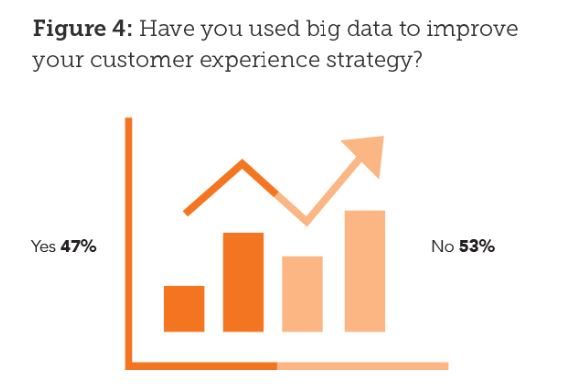Depending on how you look at it, either the message of the benefits of big data are not getting across, or there is a lot of work to be done in the field of customer experience. Those are the general analysis points that emerged from a survey put out by the researchers at Consero Group.
The big finding to come out of the survey was that 53 percent of respondents in the customer experience field have not used big data in their strategic improvement plans. In fact, 58 percent of Chief Customer Experience Officers have not been able to identify a link between financial performance and Customer Experience metrics.
The survey turned up many other findings that paint a picture of a market of opportunities and challenges that lie ahead for big data in this market.

Source: Consero, The November 2015 Customer Experience Data Survey
For example, the question of resources reared its head when 68 percent of Chief Customer Experience Officers (CEOs) stated that department management efficiency was affected by a lack of sufficient resources. There is also information that indicates how customer acquisition is generally assigned less priority at 38 percent than the priority placed in customer retention, which comes in at 56 percent of executive staff.
As far as the main challenge that respondents faced, forty-three percent indicated that there was a misalignment between organizational goals and customer experience strategy.
In each of these cases, it is clear that big data and analytics can provide the right kind of experience and business value to make a significant difference. It would seem that business advisors and practitioners have a fertile environment in which to ply the power of modern data practices and to illustrate how rapid analytics add quickly to the bottom line.
These are classic use cases that begin to tell the story with actionable insight that can be gained by constructing a rapid data model. A quick review of available options and products shows that there is no shortage of availability of solutions that utilize big data technology. Therefore, this can only be explained by this point in time along the adoption continuum, and in a field that stands to benefit so significantly from big data technologies, we can probably expect a boom in this field in the near future.